The Fred C. Geer Farmhouse is one of the oldest structures remaining in the City of Durham; much like the Calvin O'Briant farmhouse on Holloway Street, the city has grown to 'enclose' the structure in a city framework, although its move down-the-'block' in 1923 to a street corner gives it less of an appearance of inconformity to the grid than the O'Briant house.
The Geer family has roots in this area of the Piedmont dating back to at least 1758, when John Geer was living in then-Rutherford County. A son, Frederick C. Geer (c 1755-c 1840) was living in then-Orange County by the early 19th century; he willed property and enslaved people to Jesse B. Geer and another Frederick C. Geer (1823-1919.) These latter two appear to have had farmhouses northeast of Durham along the Roxboro Road by the 1860s. It is this latter Fred Geer that appears to have owned the farmhouse in question, and Jesse Geer was likely his father.
[I thought I'd try to neatly present the genealogy of the Geer family related to the farmhouse, but I'll need to leave that to a genealogy buff. Seems that the southeast was rife with Fred Geers. Of interest, a few internet ancestry sites assert that Fred Geer-the youngest was the maternal great-grandfather of Ernie Barnes.]
1867 Map, showing the Jesse and Fred Geer farms.
Between Jesse and Fred, the Geer family owned a great deal of real estate in Durham. Fred became involved in a number of endeavors, including but not limited to a stake in the Durham Railroad Company, laying out Main Street (also called Pratt Street), investing in the ZI Lyon Tobacco Co. (with JW Cheek), the Morehead Banking Company, and commissioner of the short-lived incorporated town of North Durham.
1887 Map, showing the "FC Geer" farm.
In Durham's ill-fated bid for what-would-become-Meredith College, Geer offered 16 acres of land in North Durham. I suspect that some portion of this land was what he donated to the North Durham Baptist Church in 1887 (later Grace Baptist Church.)
1890 map of North Durham
The construction of the [Fred] Geer Building, built in 1914, appears to have been a focused entrepreneurial endeavor on the part of Mr. Geer; in the 1915 city directory his occupation is listed as President of the FC Geer Co., owners of the Geer Building.
Geer died in 1919.
The fate of his farmhouse immediately after that seems unclear. Geer owned so much land that I became lost in the deed records trying to track down the disposition of the parcel of land that supported his home. Per secondary sources, it was moved to the west end of the block between N. Alston and Hamlin (Rosetta) in 1923 for the construction of the Thomas E. Cheek home.
Plat from 1937 - the large parcel is the former location of the Geer Farmhouse - by then relocated to the smaller parcel at the corner of Hamlin and E. Trinity.
The house and land appear to have remained the property of Thomas Edgar Cheek until his death, seemingly at a young age, in 1947. The house appears to have gone into probate, with the Fidelity Bank, acting as guardian for Cheek's "infant daughter, Elizabeth Taylor Cheek" selling her share, their share, and TE Cheek's share to J. Langston Thomas.
JL Thomas and his wife Genevieve appear to have lived in the house until the 1960s; in November 1968, Genevieve, then widowed, sold the house to Ruby and Chauncey Planck.
1959 aerial, showing the house at the upper left hand corner of the block.
Ruby Planck, known as "Mom" to a broader audience than just her progeny, became a beloved figure to, seemingly, an entire generation of young people in Durham. Ruby ran the Cosmo Room pub, upstairs from the Ivy Room on West Main Street. There, a diverse cross-section of Durham came and passed time. Jim Wise recounts more about "Mom" in a 2008 article from the News and Observer, as well as in his book Durham Tales. The below is excerpted from Durham Tales with Jim's kind permission:
[...]
Literally speaking, [Ruby] was mom to just her own five kids, and four of the children (the eldest having moved to San Francisco back when hippies were still beatniks.) Metaphorically, though, she was Mom and her home a sanctuary for an honorary extended family of in-laws, outlaws, mystics, mechanics, gypsies, geeks, poets, professors and plumbers.
In the '60s an early '70s, Mom was chief cook and bottle washer for the Cosmo taproom above the Ivy Room restaurant ... This is where, with wit and wisdom and good conversation, she collected a clientele mixed of physicians and pilots, [EPA] engineers, and already-aging flower children; trucker, veterans, freaks, flakes, and some souls lost and some souls looking to get into that condition after reading too much Kerouac. The occasional undergraduate would get sent back to campus early if Mom knew there was a test in the morning.
After she retired, much of Mom's coterie followed to her kitchen on East Trinity Avenue, where she held court while suppers simmered, sizzled or set. "Durham" and "gourmet" were mutually exclusive terms back then, but Mom's repertoire ranged from Assyrian to Harnett County and mealtime was as likely to mean dolmades as country ham. Between the street out front and the wildlife sanctuary out back, Mom's place was a cozy confine in the world but just a little outside it, too. Roger the Anglican/Catholic/Buddhist would wax metaphysical, George the physiologist would wax emphysemic about anti-smoking attitudes. Don would talk about growing things, Elton about flying things and Phrog about blowing things up or reading to children.
The house was full of living things: dogs, cats, rats, fish, ferrets, plants, and people. It didn't take much excuse for a party. The night Chaunce turned sixty, he was the last man dancing. Thanksgiving was occasion for true feasting, and any wedding in the crowd called forth one of Mrs. Planck's splendid, towering cakes - even if, once, the slippery layers had to be held together with a calvary saber. Poker games, cooking lessons and talk -- about big bands in the '30s, wartime in the '40s (Chaunce had been in the second wave into Normandy), New Jersey in the winter and gardens in the spring, and about books and writing and writers. Gathered around her kitchen table while something simmered on the stove, over coffee in the morning or Manhattans on Friday night, conversations ranged from Depression-era politics to the proper way of stuffing grape leaves, from media criticism to Buddhist theology and from growing peas and shrubbery to the power of the written word.
Mom loved writing, and she collected writers - real and wannabe - into her fold. She encouraged, cajoled, criticized, and shared rejection slips, as well as her Ladies' Home Journal piece, to show that, yes, it could be done. Some of those fortunate souls went on to see their names in print in the bookstores, while other found there were other forms of creativity. For all, Mom remained a matron Saint.
[...]
Mom would take on any challenge, especially if it involved cooking. In 1978, someone asked her, a one-time Southern farm girl, to demonstrate authentic, down-home, folky persimmon pudding for the Festival of North Carolina Folklife. She did it, for four hot July days and 50,000 festival-goers -- though theretofore she had never made persimmon pudding in her life -- authentic, down-home, folky or otherwise. Mom's court endured, but all things end. The courtiers aged, some moved away and some passed on. Mom eventually gave up the kitchen and moved to a retirement home -- all the way insisting it was NOT a "rest" home. Right to the end, she kept her spirit, her wit and her sense of humor.
Not long before she died, a preacher came to call. They talked for a while, then the good pastor said he'd be going since Miss Ruby looked ready to nod off.
"That," she said, "is because you're boring."
Her son, Joseph Planck, sold the house in 2003 to a group of Old North Durham residents, which eventually whittled down to Tom and Janice Transue and John Compton.
326 E. Trinity, 09.20.02
(Courtesy Tom Transue)
326 E. Trinity, 09.20.02
(Courtesy Tom Transue)
326 E. Trinity, 09.20.02
(Courtesy Tom Transue)
326 E. Trinity, 09.20.02
(Courtesy Tom Transue)
326 E. Trinity, 09.20.02
(Courtesy Tom Transue)
They renovated the house and, after renting it out for a short period, sold it to the current homeowners in 2005.
Geer Farmhouse, 02.12.11
Geer Farmhouse, 02.07.11
Find this spot on a Google Map.
36.005939,-78.889398

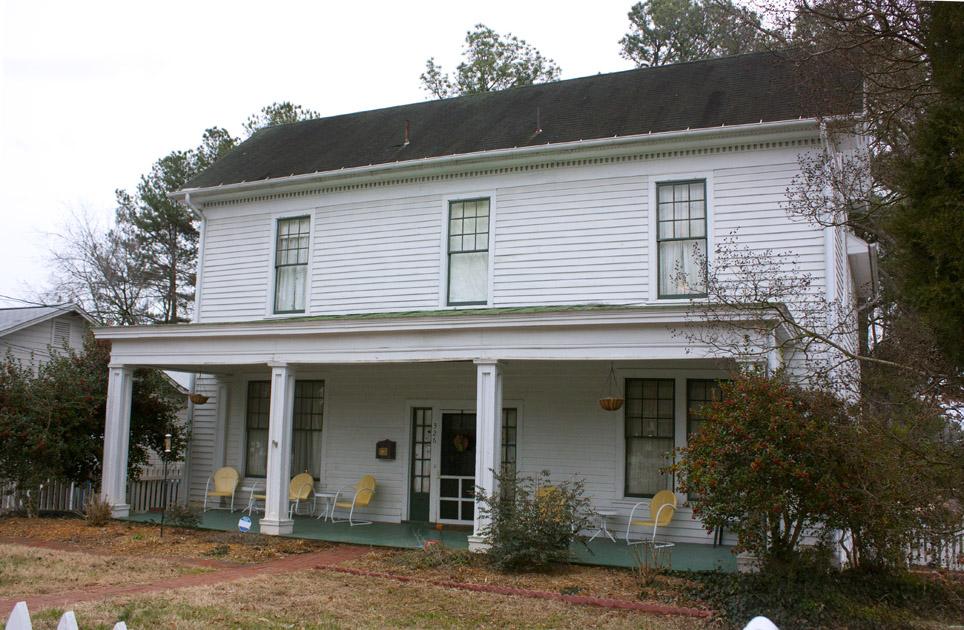
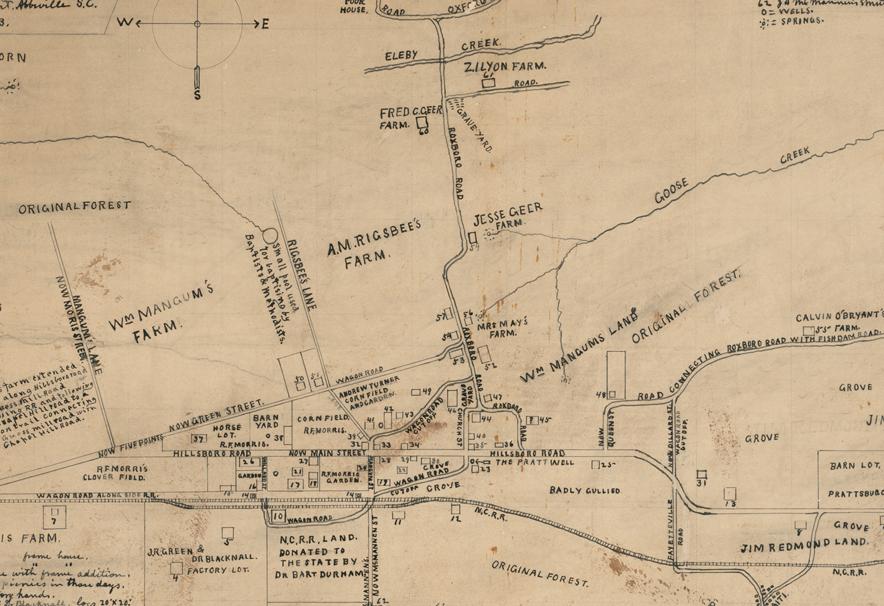
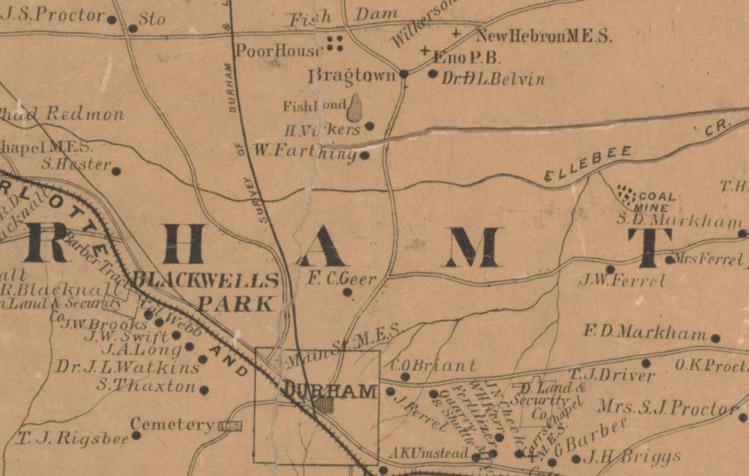
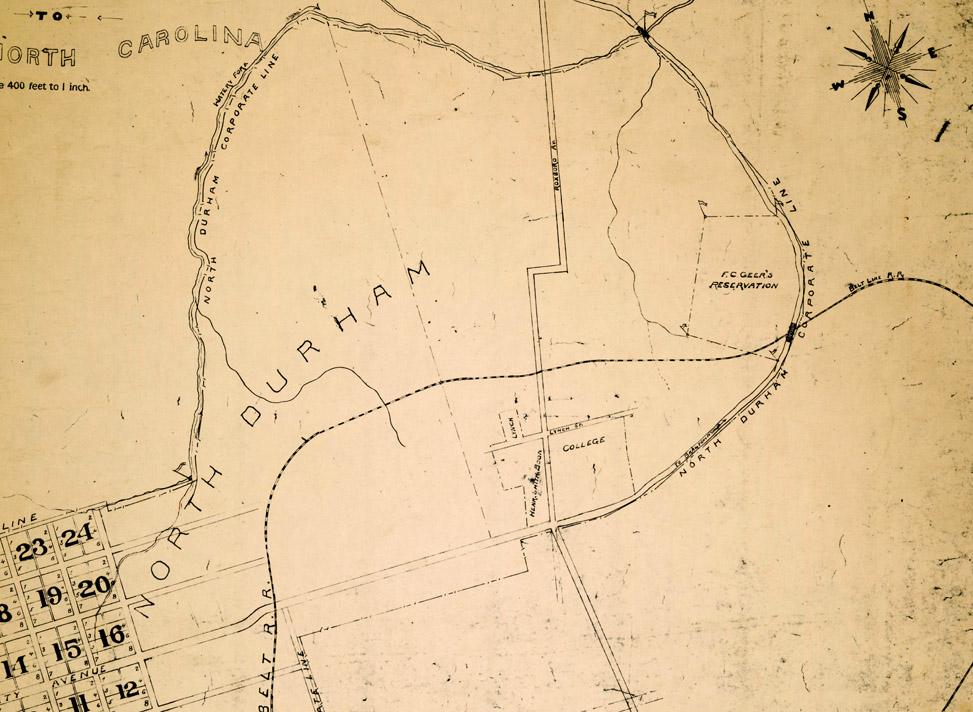
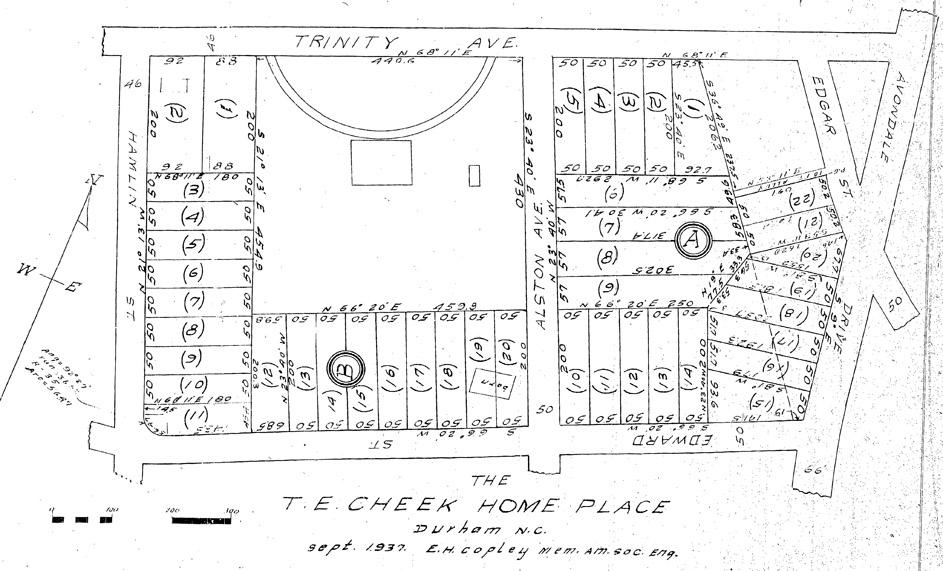
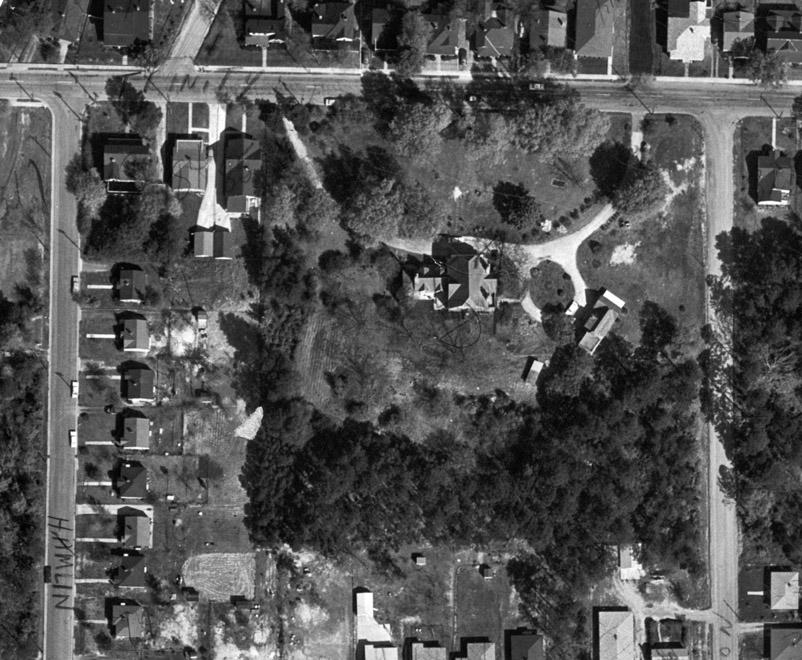
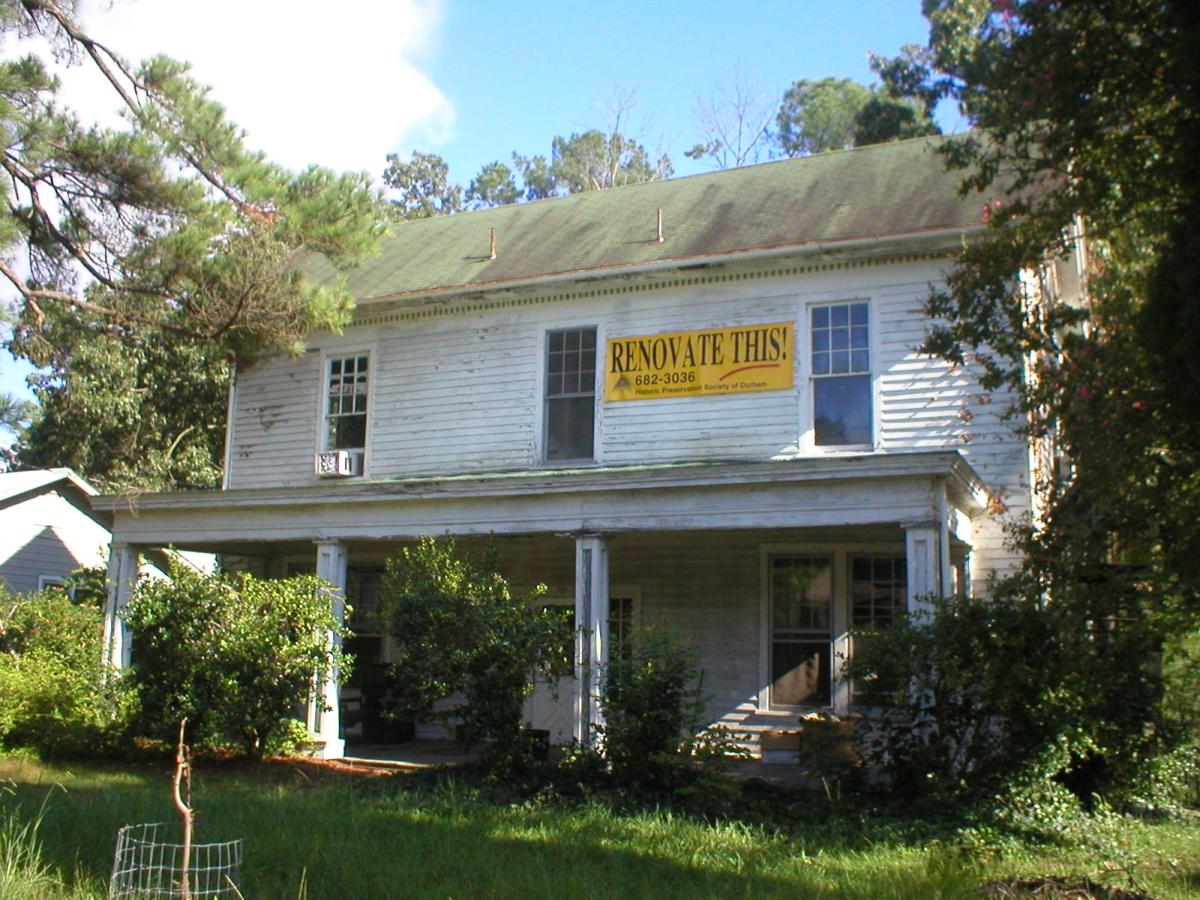
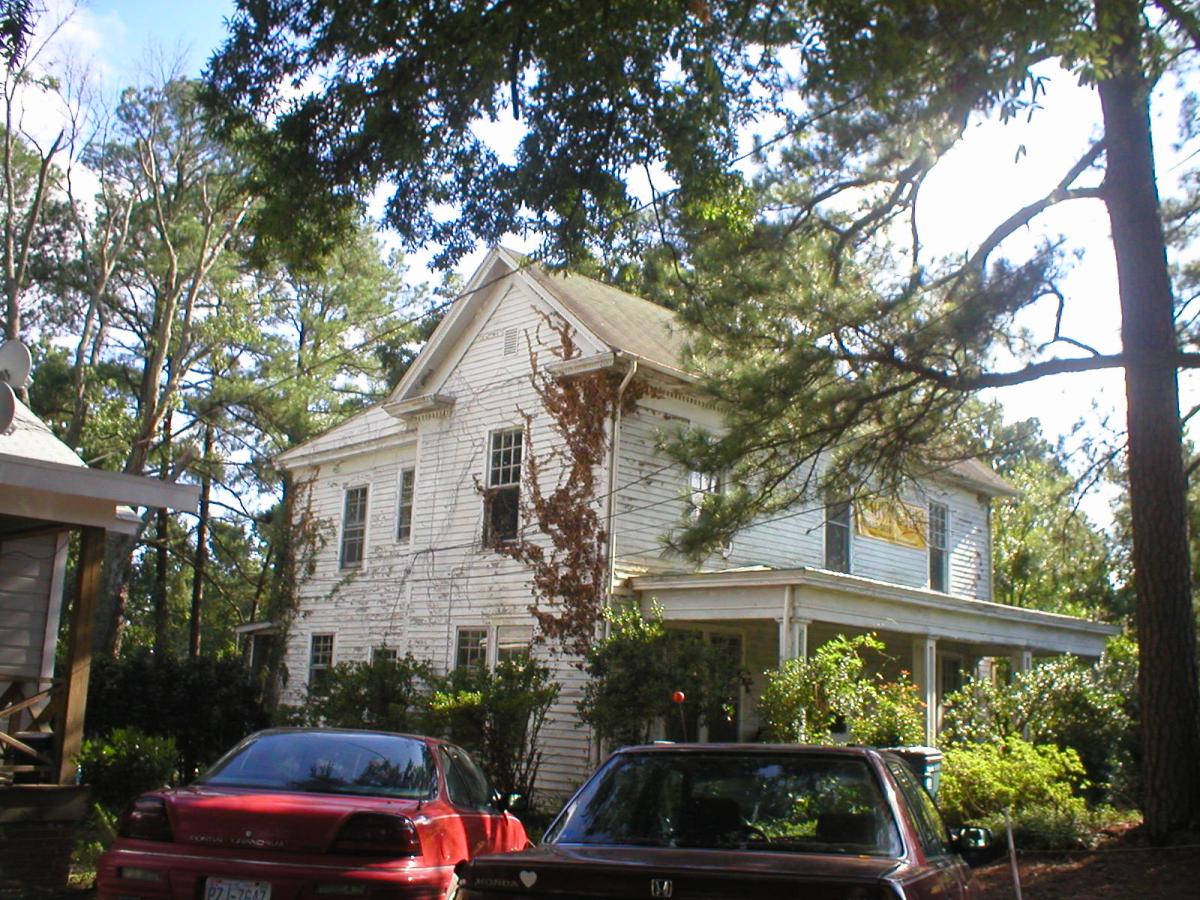
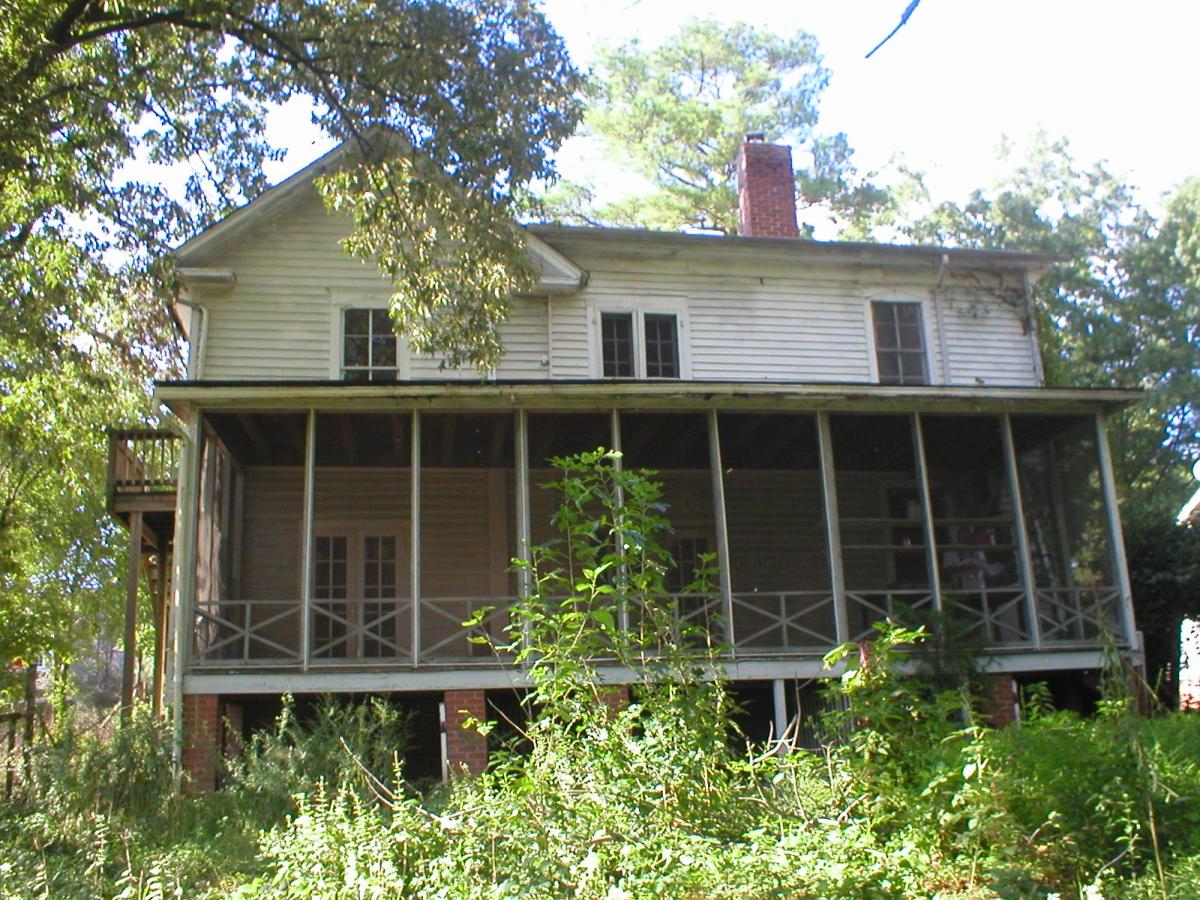
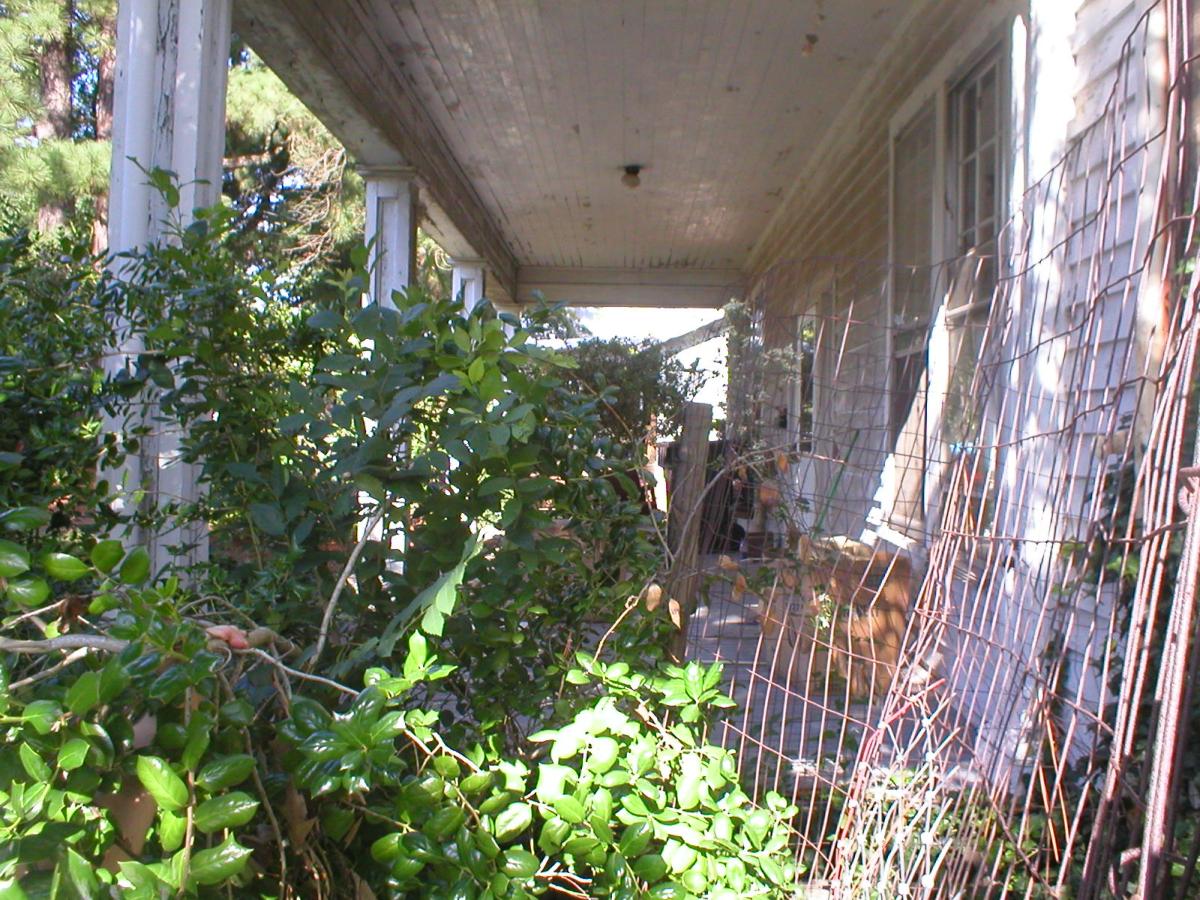
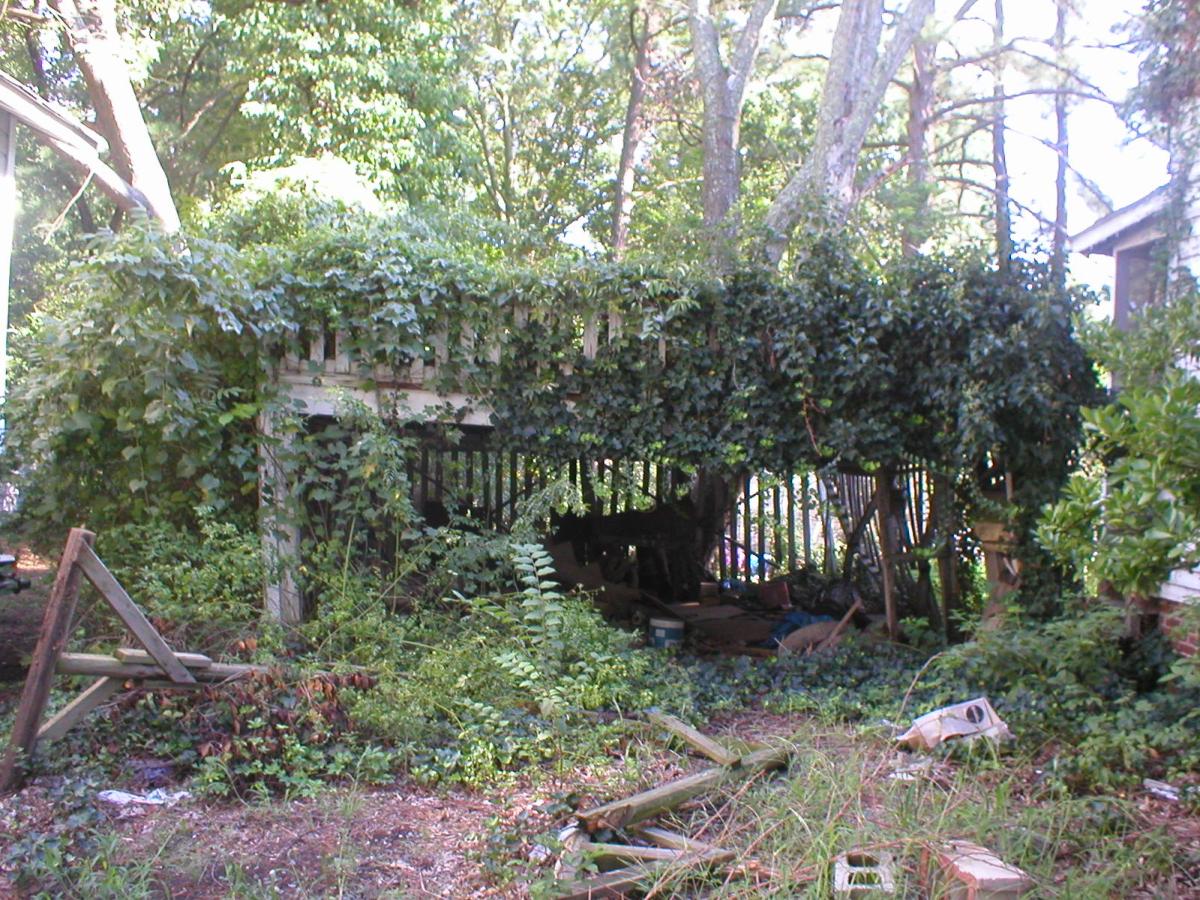
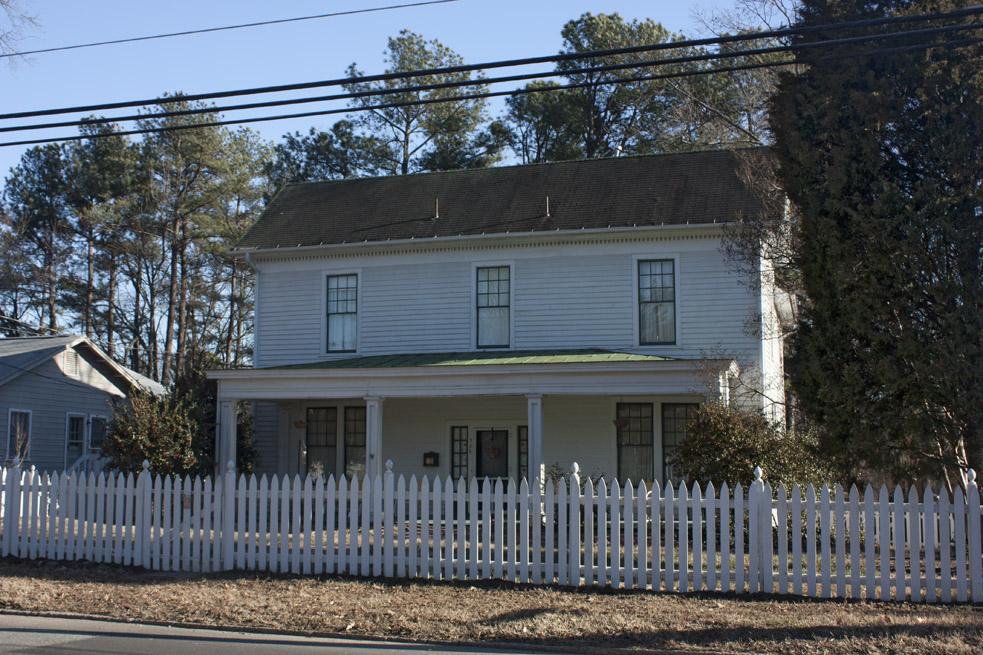
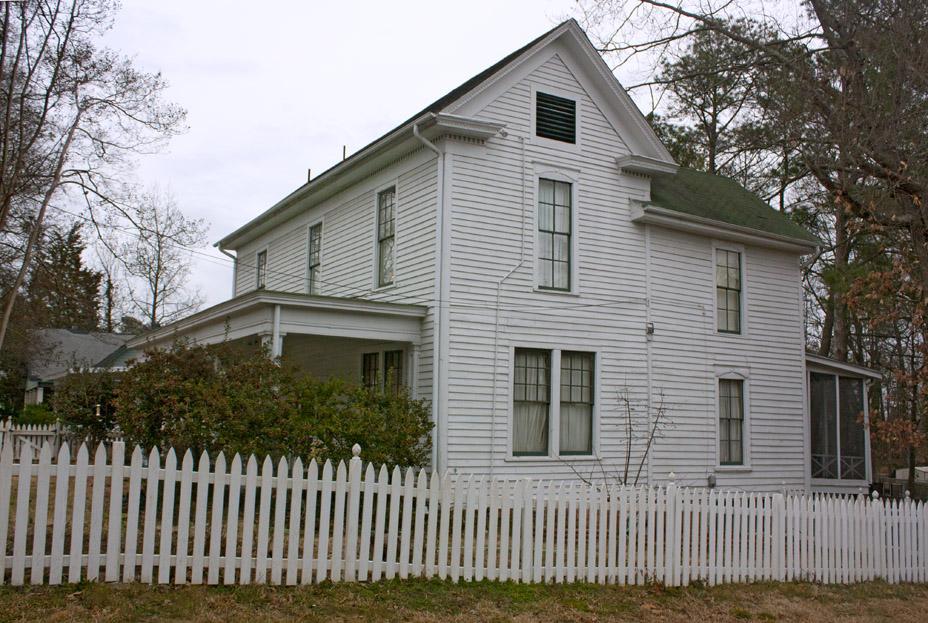
Comments
Submitted by Freddie (not verified) on Wed, 2/16/2011 - 1:02pm
Awesome stuff! I always try to convince the Geer's farmhouse neighbor Pete that his house is older than what it is...It's a bungalow that was also sold by Preservation Durham to them and was a duplex converted to single family. Based on the architectural features, I'm just not convinced it was when city records indicate. Looking at the plat you posted, his house stands on the parcel to the left of the Cheek house ( number 1, 88x200). The Geer farmhouse stands on number 2, right next to it, but there is a house in between them. It appears that parcel was split into two though as 2 houses sit in it now.
Submitted by Gary (not verified) on Wed, 2/16/2011 - 1:21pm
Freddie
The number 1 parcel was split in two on a 1947 plat - also I didn't investigate in detail, in appears that Thomas Cheek still owned these parcels prior to his death; at the time of the probate sale I mentioned in this post, it appears that parcel 1 was subdivided and sold as well - again, didn't look in detail, so that may not be exactly right.
GK
Submitted by Steve Graff (not verified) on Wed, 2/16/2011 - 3:01pm
This is awesome! You have found so many pictures and details of our home (we are current owners of the Geer Farmhouse) that I had often wondered about, from the condition of the house before renovation, to the garage/carport along the side and the big tree that used to be in the front yard.
For the record, a total of six neighbors originally bought the home in order to renovate it. In addition to Tom Transue, Janice Jones and John Compton were Len Stanley, David Scheit and Alice Alexander.
I believe that the Old North Durham neighborhood as well as Durham as a whole owes them their gratitude for helping to preserve one of the oldest remaining homes in Durham
Submitted by Steve Graff (not verified) on Wed, 2/16/2011 - 4:07pm
Any idea on what happened to the Jesse Geer Farmhouse? I've often wondered where it looked like and where it was located.
Submitted by Gary (not verified) on Wed, 2/16/2011 - 4:57pm
Steve
There isn't easy-to-find information out there about Jesse Geer. My guess, based on the location of the Goose Creek tributaries on the Blount map, is that Jesse's farmhouse was likely located around Corporation or Dowd - somewhere between Mangum and Gurley.
GK
Submitted by Marsosudiro (not verified) on Wed, 2/16/2011 - 5:32pm
Is it known what year this building was actually constructed? (My apologies if it's in the text somewhere - I couldn't spot it other than "in the 1860s")
Also, is there a list somewhere of Durham's oldest buildings and homes?
A friend of mine recently bought Carroll House in what is now Forest Hills. The listed build date is 1860.
Submitted by Steve Graff (not verified) on Wed, 2/16/2011 - 10:51pm
The Geer Farmhouse is believed to date back to 1865, but some large support beams in the basement have saw marks on them that indicate a possible earlier date of construction.
Submitted by Toby (not verified) on Thu, 2/17/2011 - 8:25pm
@Gary: My reading of the Blount map would put the Jesse Geer house and farm further north. The map shows the house located right on the east side of Roxboro Rd, with the northern-most of the three Goose Creek tributaries starting just to the east. The county GIS maps show a creek matching that general description, and it crosses Roxboro just north of Corporation St. Here's the closest parcel to that location:
http://gisweb.durhamnc.gov/GoMaps/map/Index.cfm?parcel_id=110129
Owned by the Union Missionary Baptist Church, and apparently torn down sometime between when this Google StreetView shot was taken --
http://bit.ly/hJOddm
-- and when the accompanying Google aerial photo was taken.
Is it possible that *was* the Jesse Geer farmhouse?
Submitted by Gary (not verified) on Thu, 2/17/2011 - 8:41pm
Toby
That's right about where I meant, with some one-block-in-all-directions margin for error. My thought on Dowd was that it sits at high ground, about level with Mangum, whereas Corporation drops off towards Roxboro, so surmising that the house would have been more to the SW, on the high ground. I doubt that house was the Geer Farmhouse, although not impossible. They seem to have had a bit of money, and that looks more typical for late 19th century/early 20th century East End rental housing.
GK
Submitted by Beverly Watson (not verified) on Tue, 2/22/2011 - 9:54pm
Thanks so much for the article on the Geer Farmhouse. As for the little bit of genealogy you mentioned - this Frederick C. Geer (1823-1919) was the son of Jesse B. Geer and Mary Williams.
Frederick Geer (c1755-1840), son of David Geer, and Sarah Reeves (1760-1822) were the parents of Jesse B. Geer and another Frederick C. Geer (1800-1848). When Frederick C. Geer (1800-1848) died, unmarried and without legitimate heirs, he willed his estate to his brother Jesse and his nephew F. C. Geer (1823-1919).
Sarah Reeves' father William Reeves was one of the first settlers in present Durham with a 1746 land grant south of the Neuse in the area where E. Geer St. ends.
Submitted by Muriel Planck Eylers (not verified) on Thu, 6/30/2011 - 2:00am
I am a daughter of Ruby and Chauncy Planck, who owned the Geer housefor many years. When we left it, we left behind an oil portrait of Ruby, by Daria Whitt. My daughter Sarah, who grew up in the house, is interested in getting that painting of her grandmother(now deceased) Please email me at mpeylers@gmail.com if you can help me reaquire the painting. Thanks, Muriel Planck Eylers
Add new comment
Log in or register to post comments.